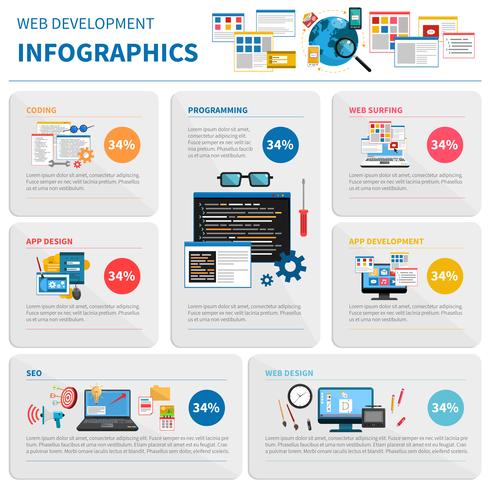The Development Of Website Design: From Past To Present
The Development Of Website Design: From Past To Present
Blog Article
Written By-Pappas Lunde
In the past, sites were straightforward and focused on information. Navigating was straight, and style was for desktop computers. Now, user experience is crucial. Information guides layouts for easy navigating. Receptive layouts match different devices. Today, dark mode lowers strain, and minimalist food selections enhance navigation. Interactive features involve users, and vibrant visuals stick out. AI assimilation improves engagement. See how design has evolved to boost your online journey.
Very Early Days of Website Design
In the very early days of website design, simplicity preponderated. Internet sites were fundamental, with minimal colors, fonts, and layouts. The emphasis got on supplying information rather than flashy visuals. Users accessed the web via slow-moving dial-up links, so speed and functionality were essential.
Navigation food selections were straightforward, usually located at the top or side of the page. Web sites were created for computer, as mobile surfing had not been yet prevalent. Content was king, and developers focused on easy readability over intricate style aspects.
HTML was the key coding language made use of, and designers had to function within its restrictions. Computer animations and interactive features were very little contrasted to today's requirements. Internet sites were static, with little dynamic material or individualized user experiences.
Surge of User-Focused Layout
With the advancement of website style, a change in the direction of user-focused style concepts has actually become significantly prominent. Today, producing internet sites that focus on user experience is vital for involving site visitors and achieving company goals. User-focused design includes recognizing the needs, preferences, and habits of your target market to customize the web site's layout, content, and includes as necessary.
Developers now conduct comprehensive research study, such as user surveys and usability testing, to collect understandings and feedback straight from individuals. This data-driven approach helps in developing intuitive navigating, clear calls-to-action, and aesthetically attractive interfaces that resonate with site visitors. By placing the customer at the center of the style procedure, web sites can provide an extra customized and satisfying experience.
Receptive layout has actually also emerged as a key element of user-focused style, guaranteeing that web sites are optimized for numerous tools and screen dimensions. This flexibility enhances accessibility and usability, satisfying the diverse means customers engage with sites today. Essentially, Read More Here of user-focused style signifies a change in the direction of producing electronic experiences that prioritize the demands and expectations of completion individual.
Modern Trends in Web Design
Discover the latest fads forming web design today. One prominent trend is dark setting layout, supplying a sleek and modern-day look while decreasing eye pressure in low-light environments. An additional vital fad is minimal navigation, streamlining menus and improving individual experience by focusing on essential elements. Including simply click the following page -interactions, such as animated buttons or scrolling results, can create a more appealing and interactive internet site. Receptive layout remains vital, making sure seamless user experiences throughout various tools. Additionally, making business website development of vibrant typography and asymmetrical formats can include visual interest and accentuate particular content.
Integrating AI technology, like chatbots for consumer assistance or personalized referrals, enhances user interaction and enhances processes. Accessibility has also become a significant trend, with designers prioritizing inclusive layout methods to deal with varied customer requirements. Accepting sustainability by enhancing web site efficiency for speed and performance is one more emerging pattern in website design. Working together with user feedback and data analytics to iterate and boost style continually is necessary for remaining pertinent in the ever-evolving electronic landscape. By accepting these modern-day patterns, you can develop a visually enticing, user-friendly website that reverberates with your audience.
Conclusion
As you review the development of site design from the early days to currently, you can see how user-focused style has come to be the driving pressure behind contemporary patterns.
Accept the trip of adjustment and adjustment in web design, always keeping the user experience at the center.
Stay present with the most up to date fads and innovations, and never ever stop advancing your technique to create visually magnificent and easy to use sites.
Develop, adapt, and create - the future of web design is in your hands.
